My previous post about the Orkney Islands focused on Kirkwall and the Italian Chapel. In this entry, I've posted photographs of the Broch of Birsay, the Stone Circle of Brodgar, Gurness Broch and Cuween Hill cairn.
In the winter months, the Broch of Birsay can be visited without paying an admission fee. Visitors must wait until low tide in order to walk across the causeway to see the broch. When I visited, low tide was from 8:00am until mid-day. I arrived at 8:00am to walk across the causeway. The sea was rough on the northern side of the causeway, and we saw several massive waves crashing against the stones. The causeway was a little slippery with the seaweed, so we walked carefully. In places, the causeway had been washed away, but visitors could walk onto the larger stones or the sand.

Views from the causeway at Birsay

Views of pools of water on the side of the raised causeway at Birsay
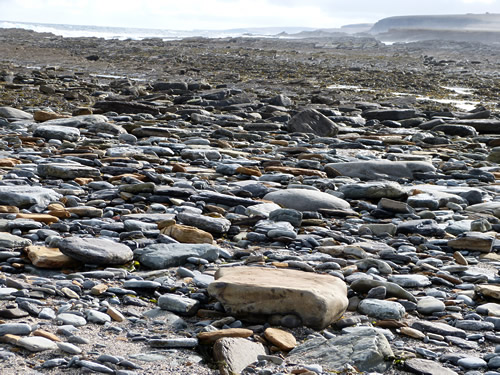
Birsay beach on Orkney
I enjoyed seeing the causeway after the tide had just gone out and looking for shells, creatures, and the small pools of water left behind.
Once we arrived on the other side of the causeway, we walked up a small slope that led to the broch. This was originally a tunnel that led up from the beach to the village, and it was wide enough to bring boats up. However, part of the village has collapsed into the sea as the slopes have eroded, but it's not clear how much of the village has been lost. The origins of the village are Celtic and Norse.
This land was probably first settled in the 5th century by missionaries. In the 7th century, it was a Pictish fortress before being taken over by the Norse in the 9th century. A carved Pictish stone (replica) can be seen here, and some of the Norse buildings have drainage and under-floor heating. One of the Norse buildings is a sauna. In the 12th century, a church and monastary was built here, and the ruins can still be seen.
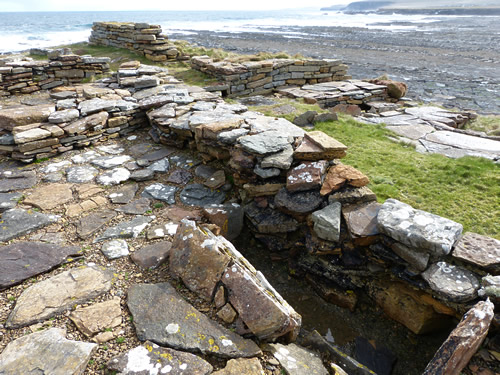
Broch of Birsay settlement with ruins of walls and under-floor heating.
After visiting the Broch of Birsay, we drove to the Neolithic stone circle, the Ring of Brodgar. The stone circle is built between two lakes and is in a picturesque location. The stone circle is stunning. While walking around the Ring of Brodgar, we felt like we were entering four seasons (sun to rain to hail); the weather can change so quickly.
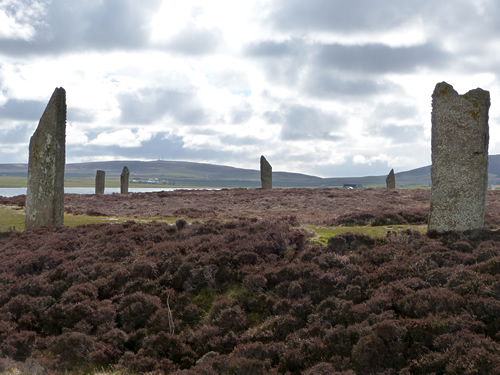
Ring of Brodgar
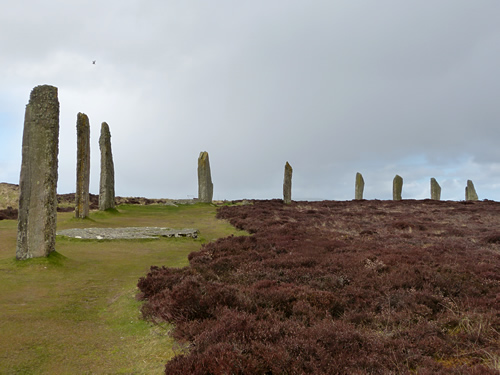
Ring of Brodgar
Another ancient site on Orkney is the Broch of Gurness, an Iron Age settlement. The broch is surrounded by houses and is separated by a dug trench. Part of the settlement has collapsed into the sea due to the erosion. While I was waiting for the broch to open, I saw a tern sea bird flying above the broch.
Pieces of a Roman amphora was also discovered in the broch, which shows significance to the Roman empire at this time.
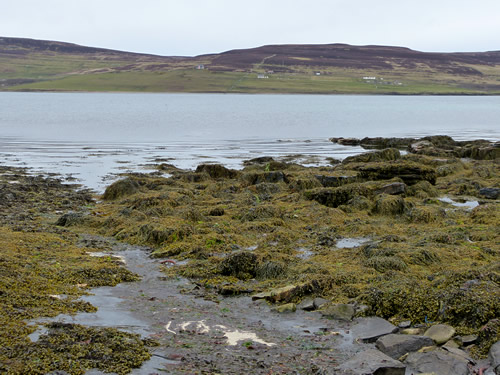
The sea next to the Broch of Gurness.
The entrance to the broch would have been grand in its day as a status symbol, and it would have been guarded. The door was made of stone and rested on a pivot stone, and this can still be seen just inside the broch. For access to the village outside, the visitors would simply use one of the side 'streets' before the door to the broch.
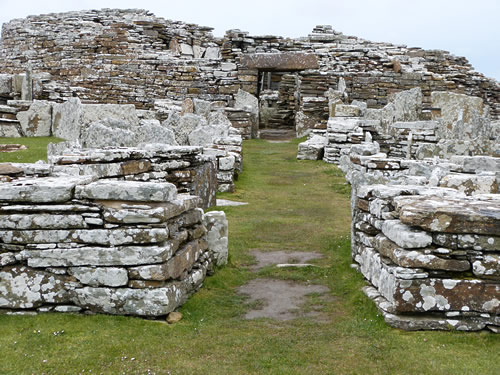
The entrance to the broch

The settlement located just outside the broch

The settlement outside the broch, with the broch to the left in the photograph. A circular pivot stone for a doorway can be seen in the photograph

A 'street' with houses on either side.

One of the houses has storage areas built inside the walls.
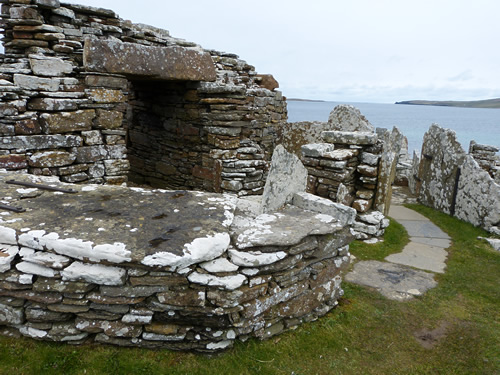
The entrance to the broch. It's possible that guard dogs were in this area, in the alcove on the other side of the large stone slabs which formed a small waiting area before the door.

The entrance to the broch
Another place to visit, close to Kirkwall, is Cuween Hill cairn. A cairn is a chambered tomb, built inside a hill or covered with earth. Thousands of these exist, but only a few have been escavated, and many more are probably waiting to be discovered. These cairns include a few human bones, such as skulls and larger bones as well as possibly the remains of a particular type of animal. It is possible that different communities had their own cairns and affiliated themselves with a particular animal. In this cairn, the animal was the dog. Human and dog bones were found here. Cuween Hill has beautiful views as it's on the side of a mountain. The tomb itself is free to access, but it is a tight fit as the passage is very narrow and muddy. Visitors must crawl through it, and unless you're very small, you need to crouch/crawl very low. This is one of the most difficult cairns to access.
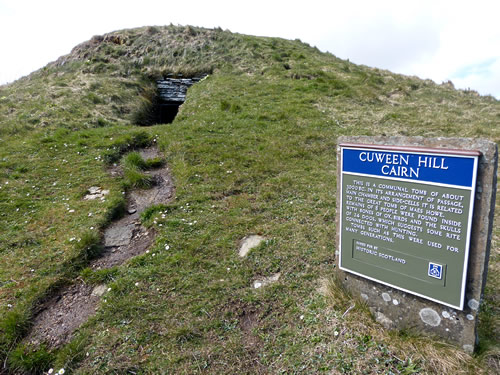
Cuween Hill cairn entrance
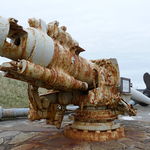


Leave a comment